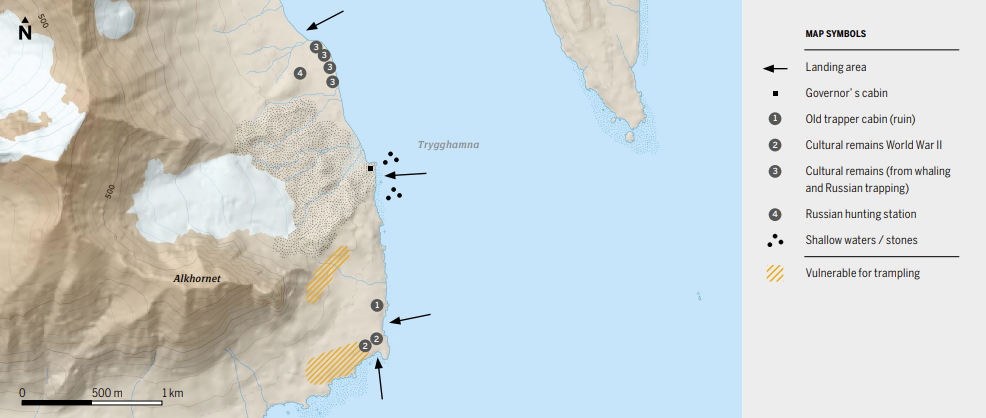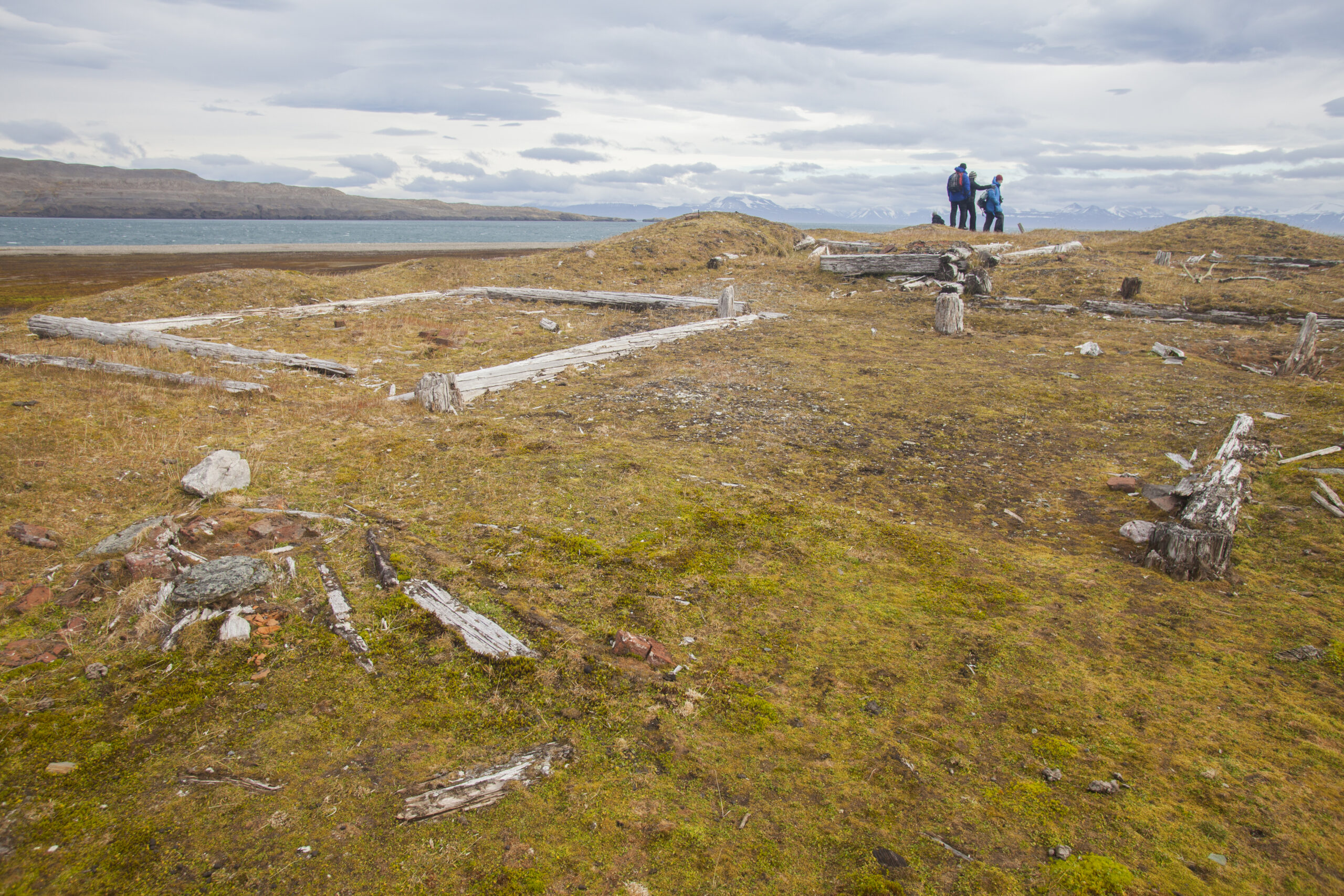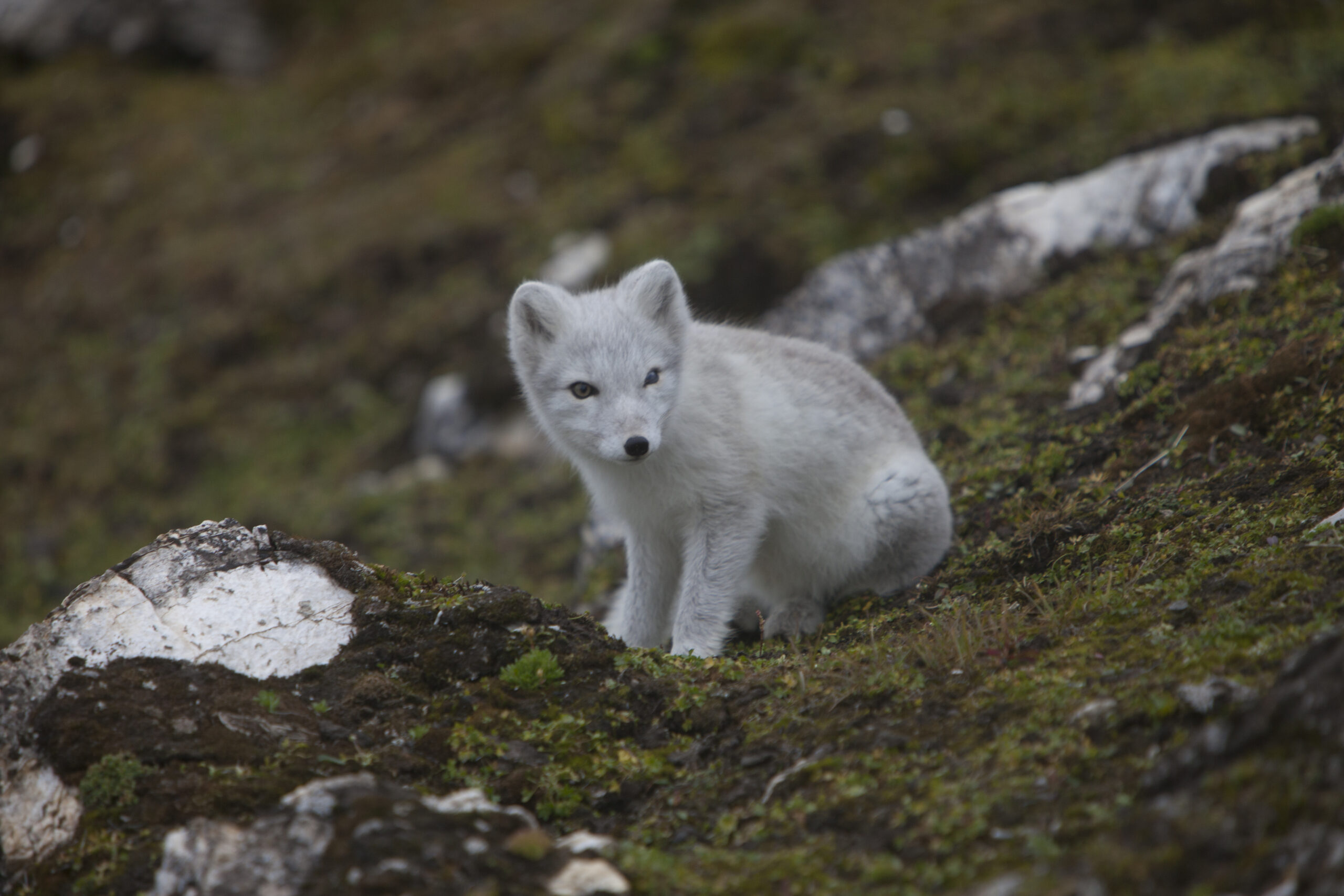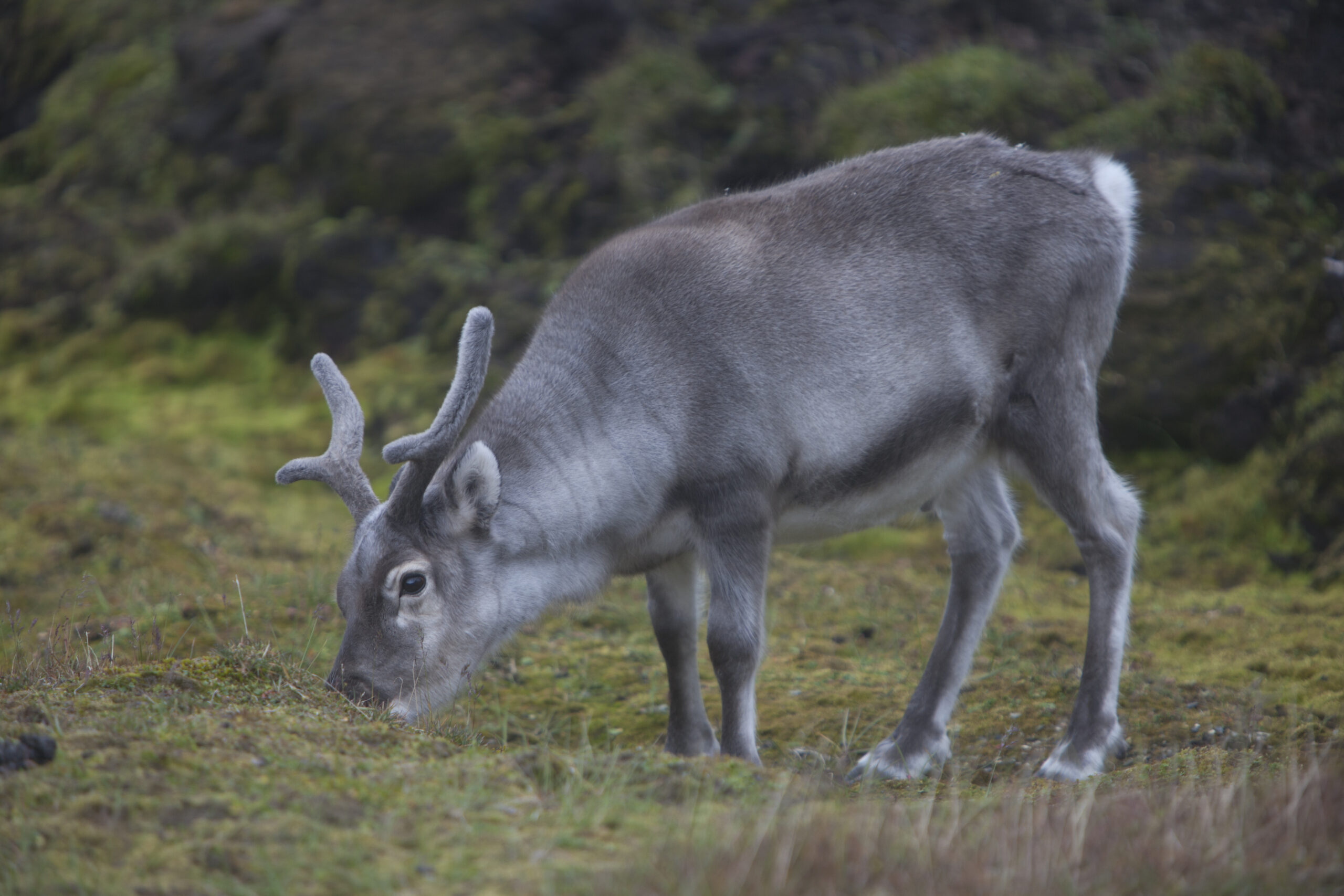
Alkhornet / Trygghamna
Since auks breed on the mountain and it is shaped like a horn, the name Alkhornet (“the auk horn”) is fitting.
Last update: 10. September 2025
Download PDF

78°13.3’N 013°50.2’E
Vegetation
At this site you can experience the enormous contrasts between the fresh and almost bare soil of the moraines in the glacier foreland to the thick peat layers and vigorous vegetation below the bird cliff at Alkhornet. Together with the rare peat moss you can find a high number of Svalbard’s vascular plant species, including a number of saxifrages and buttercups, the violet polar cress, mountain sorrel and lots of alpine meadow-grass.
Fauna
Alkhornet is one of the largest bird cliffs in West-Spitsbergen and the second largest in Isfjorden with more than 60,000 breeding kittiwake and Brünnich’s guillemot, but also fulmar, glaucous gull, little auk, puffin and black guillemot. Pink-footed goose breed on the slopes toward the bird cliff and feed from mid-May to midJune on the vegetated slopes. Common eider, purple sandpiper, Arctic skua, and snow bunting breed in the lower parts from Alkhornet toward Trygghamna. Reindeer feed on the vegetated slopes, which are also a den area for Arctic fox. Harbor seals may be seen resting on the rocks at low tide in Trygghamna.
Cultural Remains
Trygghamna was well known early on as a safe harbor with good anchorage. A whaling station from the beginning of the 1600’s is located just above the high water mark on the beach. Today the only visible remains are collapsed blubber ovens in the form of small green mounds. In the 1700’s the Russian trappers built a small cabin on the beach and later one of Svalbard’s largest hunting stations. Six graves are found in the area. Below Alkhornet are the ruins of a small cabin from the Norwegian hunting and trapping in the early 1900’s and an observation post for the Norwegian troops in Barentsburg from World War II.
Characteristic Landmark
The characteristic landmark, Alkhornet, has been welcomed by sailors in Isfjorden for centuries. While many only have the chance to admire the sight from a distance, those who land have the opportunity to experience an oasis. Rich vegetation, abundant fauna and diverse cultural remains are within walking distance from the sheltered harbor in Trygghamna.
Guidelines
- Remember to always approach a landing site calmly and carefully.
- Avoid the slopes toward the bird cliff prior to July 1 to avoid disturbing the breeding pink-footed geese.
- Retreat slowly and keep a distance if you encounter an Arctic fox den.
- Do not climb in vegetated steep slopes as these are vulnerable and turfs of vegetation will erode easily. Use tracks when such are present.
- Do not enter the large Russian trapping station from the steep side as this will cause erosion.
- Observe the blubber ovens, house ruins, graves and other historical monuments from a perimeter and avoid trampling on the remains.
- Do not pick up or rearrange the objects at the historical sites.
Tip
Bring good binoculars or a telescope to get a good view of the birds as these breed high up in the cliff.



reindeer. Photo: Jan Morten Bjørnbakk
AECO’s Site-Specific Guidelines Are Reviewed by the Governor of Svalbard and Funded by
